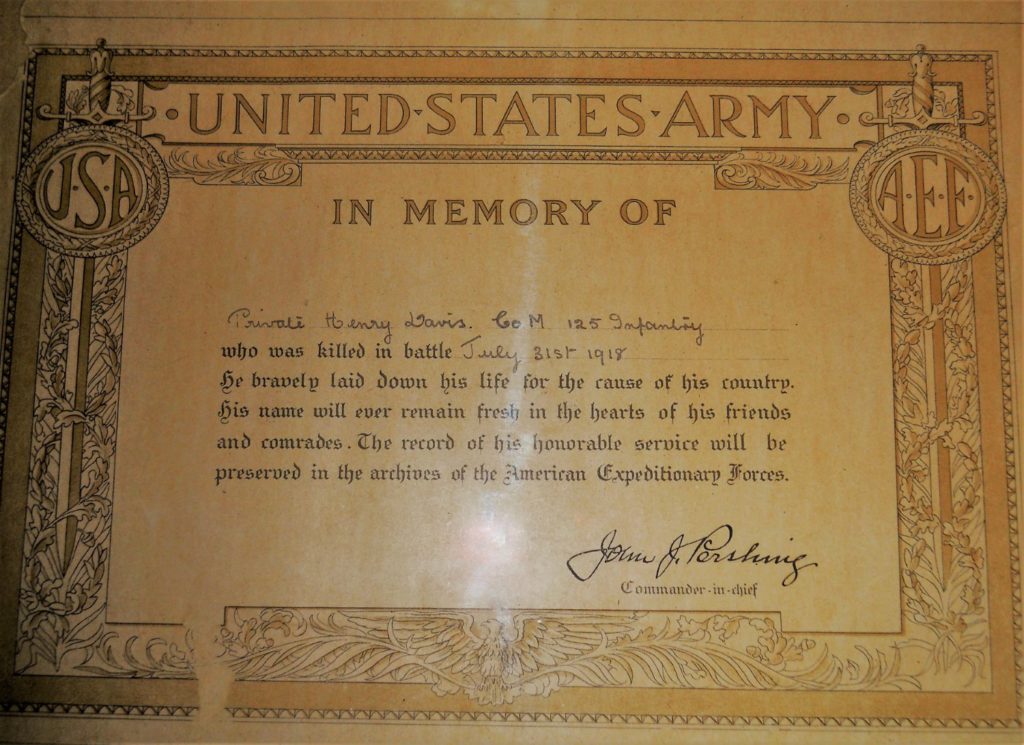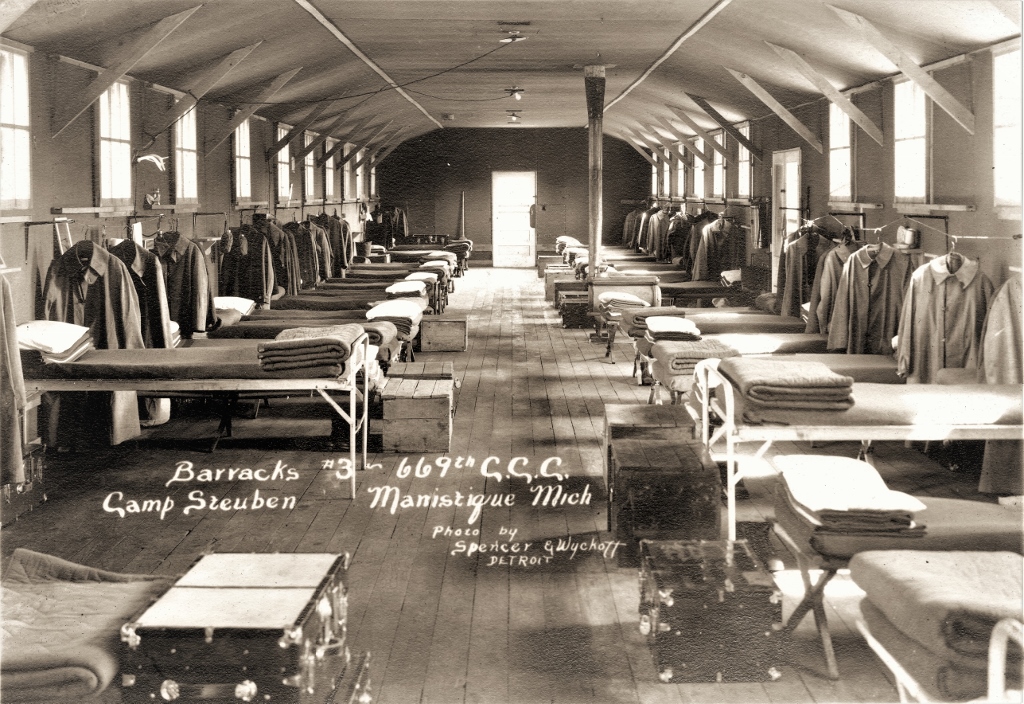On February 5, 1918, the sinking of the troop transport ship SS Tuscania sent shock waves across the nation, including the town of Manistique. The Tuscania was a former luxury passenger liner that had been pressed into service as a troop carrier by the United States Army. The Tuscania had sailed from Hoboken, New Jersey on January 24, 1918 with 2,013 soldiers and 383 crewmen on board. Despite being escorted by a British convey, the Tuscania was struck by a torpedo fired from a German submarine, and sent to the bottom of the Irish Sea. The vast majority of the troops aboard the Tuscania were rescued by the Royal Navy Destroyers Mosquito and Pigeon, but 210 souls were lost, including both military personnel and crewmen.
WWI Remembrance – Henry Davis

Certificate in Memory of Henry Davis signed by General John Pershing
Henry Davis was born in Manistique on January 8, 1900. He attended school here and was always very fond of history. Prior to his enlistment, he was employed with the Soo Line Railroad in the baggage department. He joined the army in April of 1917 at age 17, having received special consent from his parents. Davis was one of the volunteers who left Manistique on May 6, 1917, having joined the 33rd Michigan Infantry, a National Guard unit. This unit was later federalized and become part of the 125th Infantry. Davis arrived overseas in February of 1918 and was initially placed with the Railway Transportation Office. When he last wrote to his parents, he stated that the 125th would “soon be going into the thick of the fighting” and that maybe some of the boys would be hurt but they would “put the Germans of the run.” Henry Davis was killed in action in France on July 31, 1918.
Mobilizing For War – April 1917
With America’s entry into World War I in April of 1917, the citizens of Schoolcraft County rallied to support the war effort and President Woodrow Wilson’s call for troops. By Sunday morning, May 6, 1917, the first large contingent of young men left Manistique for Camp Custer. They had enlisted in the 33rd Michigan Infantry, a National Guard unit which was later federalized and became part of Company M of the 125th United States Infantry.
Carl Thorborg of Manistique reported on the send-off of the troops for the Sault Evening News. “A parade was formed at the corner of Cedar and Walnut Streets which was led by the Home Guard, followed by the W.O.W [Woodsmen of the World], Knights of Pythias, Elks, citizens and the volunteers under the command of Percy Patterson, who arrived for that purpose Saturday night.” Music was provided by the Woodsmen of the World band and the Manistique band. American flags seemed to be waving everywhere.
Civilian Conservation Corp – Camp Steuben (1933-1937)

Interior view of Barracks No. 3 at Camp Steuben. The barracks measured 20’ by 112’. Photo courtesy Vivian Haight.
President Franklin Roosevelt’s Civilian Conservation Corp (CCC) was inaugurated on April 17, 1933 with the opening of Camp Roosevelt in the George Washington National Forest in Virginia. The program was designed to employ over 250,000 young men out of work during the Great Depression.
Camp Steuben in Schoolcraft County opened only 17 days later on May 4, 1933. The first recruits went through a two-week orientation at Camp Custer near Battle Creek, before heading north to the Upper Peninsula. One hundred and forty-one men from Custer were assigned to Camp Steuben and 212 others headed to Camp Kentucky in Alger County. Their journey was delayed five hours while waiting for a ferry to cross the Straits of Mackinac. Camp Steuben received additional recruits from Fort Sheridan in Illinois.
